-
Car Reviews
- All reviews
- Midsize SUVs
- Small cars
- Utes
- Small SUVs
- Large SUVs
- Large cars
- Sports SUVs
- Sports cars
- Vans
Latest reviews
- Car News
-
Car Comparisons
Latest comparisons
- Chasing Deals
After being on sale for almost seven years, the second generation of the Nissan Leaf has been unveiled at a technology conference in Japan. The Leaf is Nissan’s first (and so far, only) standalone electric car and this new model will arrive in Australia towards the end of 2018.
The second generation of Leaf promises a number of improvements over the car that it replaces, including increased performance and refinement levels, a much more modern design, and most importantly, an increased driving range to compete against rivals such as the BMW i3 and Tesla Model 3.

“The new Nissan LEAF drives Nissan Intelligent Mobility, which is the core brand strategy for Nissan’s future,” said Hiroto Saikawa, president and chief executive officer of Nissan.
“The new Nissan LEAF, with its improved autonomy range, combined with the evolution of autonomous drive technology, such as ProPILOT Park and the simple operation of the e-Pedal, strengthens Nissan’s EV leadership, as well as the expansion of EVs globally. It also has the core strengths that will be embodied by future Nissan models.”
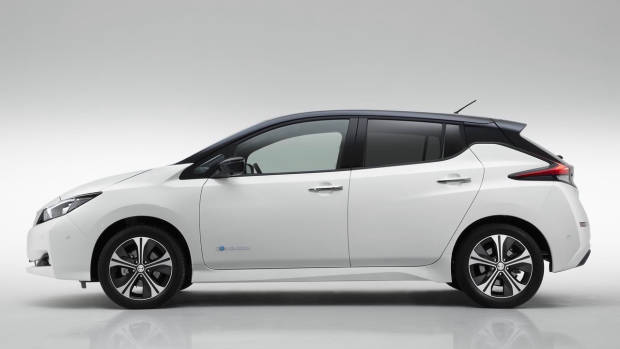
The biggest news with the second generation of Leaf is the car’s overall performance and range levels. Now with 110kW of power and 320Nm of torque on offer, the second generation of Leaf offers 30 more kW of power and 40 more Nm of torque than its predecessor. This is thanks to a larger 40-kWh lithium-ion battery pack that most significantly offers up to 400km of driving range in Japanese specification – a huge increase over the claimed 120km of the previous model offered in Australia.
Nissan have provided no performance figures to go with the new Leaf’s increase in power, but an educated guess would say that the old model’s 12 second 0-100km/h sprint time would be improved at least by a few seconds to 100km/h. Charging times are listed as up to 16 hours if using a 3kW connection, or a much shorter eight hours if using a 6kW connection. Like other electric cars, the new Leaf offers a 40-minute 80-percent quick charge function. Rumours suggest that Nissan will offer a larger battery pack soon, though nothing has been confirmed as yet.
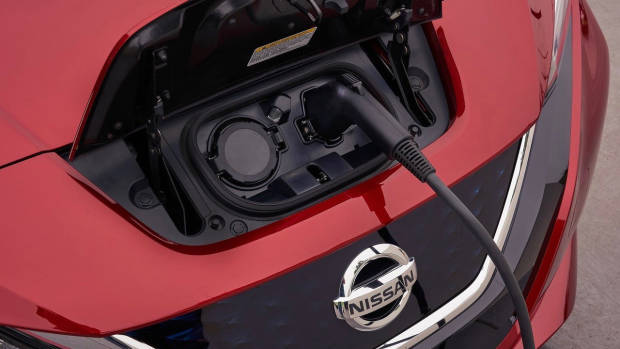
The second generation of Leaf is based on the same platform as the first generation model, and as such, its overall dimensions have not been altered significantly. Now sporting an overall length of 4,480mm (+35mm), 1,550mm height (+10mm) and 1,790mm (+20mm) wide, the second generation of Leaf is only slightly larger than the model it replaces. The wheelbase remains unchanged at 2,700mm, and the claimed 1,490kg kerb weight has changed very little, despite its added equipment and technology.
Open the boot of the second generation Nissan Leaf and you’ll find a total of 435-litres, a marked increase over the previous model’s 370-litres. Nissan has not provided a figure with the rear seats folded, but from photos we see that the load bay is not flat with the seats folded thanks to the location of the battery pack lying underneath the rear seat.
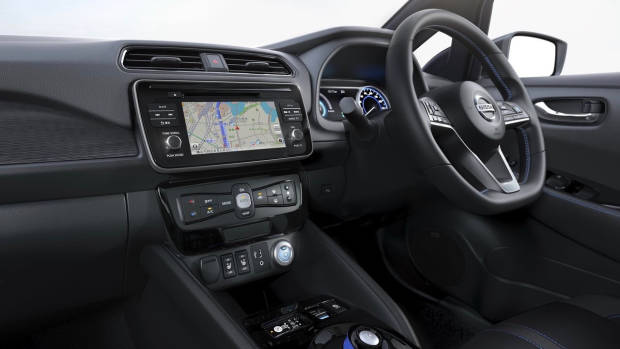
The second generation of Leaf is now much better equipped, especially when it comes to safety technology. Available on the Leaf will be Nissan’s ProPilot system that debuted on the facelifted Qashqai. ProPilot is capable of autonomously driving the Leaf between 30 and 100km/h, and combines technology such as autonomous emergency braking, radar cruise control with stop and go functionality and lane keep assist to allow the car to drive and steer itself autonomously on highways.
The new Leaf also features Nissan’s ProPilot Park system, which will completely park the car without the driver controlling the brake and throttle. It uses 12 ultrasonic sensors and four cameras to even identify an ideal parking spot. Nissan claims that both ProPilot and ProPilot Park are continually being developed to further enhance their ability, so stay tuned to what future features Nissan will add.
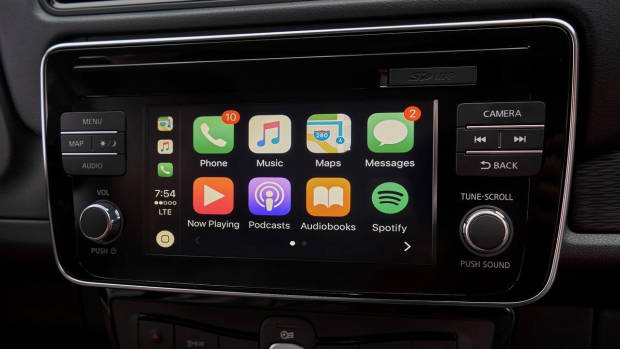
One piece of technology that Nissan is claiming is a world-first with the Leaf is the brand’s new e-Pedal. The e-Pedal takes most electric car’s brakes – which offer much stronger deceleration than conventional cars – and adds extra functionality, basically allowing Leaf owners to only use the accelerator whilst driving.
Thanks to studies done in the US, Europe and Japan, Nissan claims that the e-Pedal could be used in 90 percent of real-world braking situations. When pressure is taken away from the accelerator pedal, the car decelerates at a rate of up to 0.2g, though the brand is cautious to inform that the brake pedal is still needed in the most forceful of braking situations.
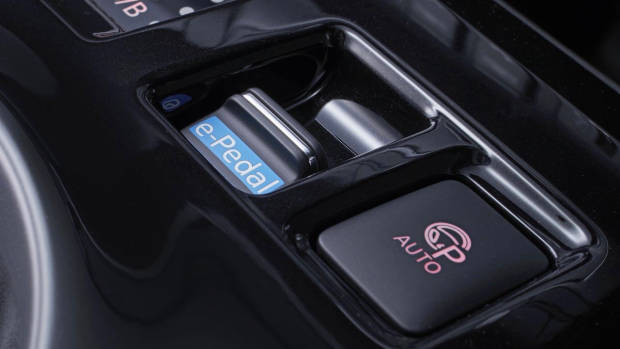
The design of the second-generation of Leaf is a big step forward compared with its dowdy predecessor. Gone is the egg-shaped front, replaced with a much more dynamic and sporting appearance. In particular, the sharp and angular front end shows a design language that has much more presence than ever before with aggressive headlights.
The side of the Leaf is more sculpted than before, with lines extending off the tailights towards the front, though despite more liberal use of piano black trim, the overall roof and window lines look almost identical to the previous model. Around the back, the Leaf has scored some almost-Volvo tailights, which appear to be much more normal than the previous model’s spaceship lighting – whether that’s a good or bad thing is up to you.
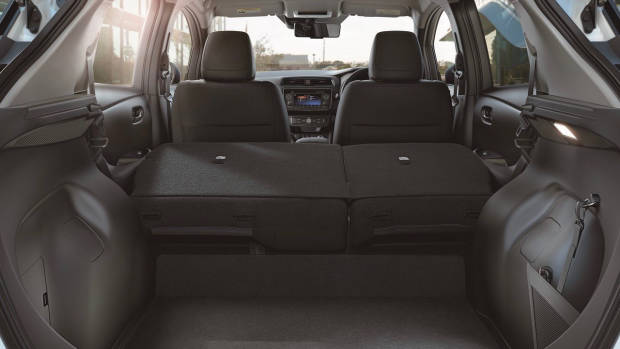
The interior of the Leaf, like the exterior, appears to be a big change from the model it replaces, with a more modern design sporting what appear to be more premium trimmings than before. Central to the Leaf’s cabin is a new 7.0-inch touchscreen infotainment system featuring Apple CarPlay and Android Auto – aside from the European Micra supermini and US Maxima sedan, this is a first for the brand. Available trim choices appear to have changed as well, with brushed carbon dashboard trimmings and even leather seat trim with a heated steering wheel all available.
The second generation of Nissan Leaf appears to be a big step forward for the brand, which sorely needs to continue its electric car development and share it to other platforms and models for future use. The second generation of Leaf has been confirmed for Australia, though its sales are likely to start in the second half of 2018 – much later than the October 2017 on-sale date in Japan, and even the January 2018 European on-sale date.
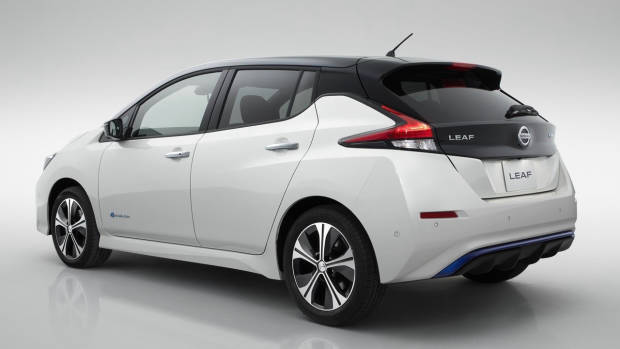
Stay tuned to Chasing Cars for news and reviews of the Nissan range.
Latest news
About Chasing cars
Chasing Cars reviews are 100% independent.
Because we are powered by Budget Direct Insurance, we don’t receive advertising or sales revenue from car manufacturers.
We’re truly independent – giving you Australia’s best car reviews.